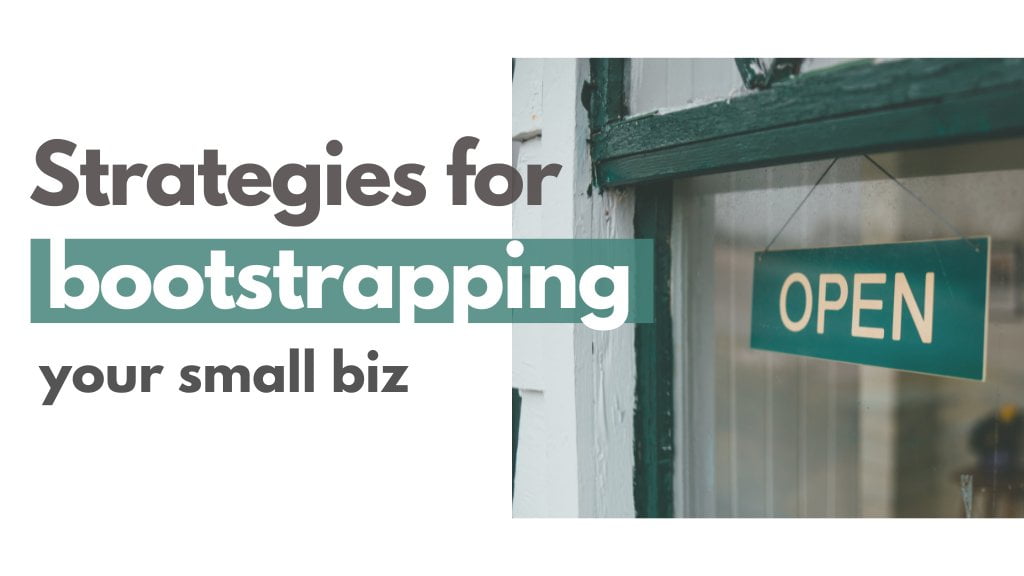So you are looking to start a small business, but there’s a significant hurdle standing in your way – limited resources. First of all, don’t consider it a challenge. Bootstrapping in business has its own advantages, the biggest ones being the lesser risk of debt and greater decision-making power.
We won’t be diving into the full advantages of bootstrapping in this article.
In this article, together we will explore practical tips and tactics that will empower you to start and grow your small business, even with limited resources.
So, let’s make things happen!
Table of Contents
Bootstrapping Methods In Business With Limited Resources
1. Validate Your Idea
Before you take the leap and invest significant time and resources into your small business, validating your idea is crucial.
You don’t want to end up putting your money into something that doesn’t sell or doesn’t profit you. Bootstrapping finances must be taken into consideration.
Conduct market research to know about the product’s demand, competition, and profitability.
You can conduct surveys to seek feedback from potential customers. One way you can do this is by creating a minimum viable product to gather real-world data.
While bootstrapping, validating your idea early on will save you from investing your limited resources into limited potential.
Adam Enfroy of adamenfroy.com says “Choosing a blogging niche based on your passions is often a recipe for disaster”. You can’t expect to make a lot of money writing about repairing roofs while you can if you actually have a roof repairs business.
So it’s all about the validity of the idea!
2. Start Small and Keep It Simple
Have you ever read the book “Company of One” by Paul Jarvis? It’s one of my favorite business books I have ever read.
The book is all about staying simple at your business. It basically challenges the sane definition of growth, i.e. more investment, more employees, more output = more growth.
Paul explains how more is not better, but better is better!
When bootstrapping in business, it’s crucial to start small and iterate as you go. Avoid the temptation to launch with a fully developed product or extensive infrastructure.

Bootstrapping Idea Sample
Let’s say you’re opening a coffee shop. Instead of investing in an extensive menu and a large space, you can start with a limited selection of high-quality coffee and a cozy seating area.
As you receive feedback from customers and as your revenue grows, you can decide to expand.
3. Build A Strong Network
I will use the example of blogging (you are going to see some blogging examples as I consider blogging as a small business and myself a solopreneur).
I always say, “A blogger can’t be a lone wolf. He needs to be a part of a bigger tribe to thrive”.
The majority of the traffic to my blog comes from X Twitter. From where on X Twitter? My friends, who continuously support me and share my blog posts and engage with them.
Lisa (who runs Small Biz Tipster) is one of them. If it weren’t for Lisa, among others, my blog wouldn’t have had the initial push it needed.
Just like running a blog, in any other small business, you need to build a strong network of people to thrive.
By networking, you may find mentors who can provide guidance, potential collaborators who can refer customers to you, or industry experts who can offer valuable advice.
4. Leverage Social Media For Bootstrapping In Business
Social media can be used to promote almost any kind of business in the world. Of course, there are exceptions like chemicals manufacturing or poly bag manufacturing.
But for the most part, social media can be your best weapon in the arsenal.
With the increasing use of mobile devices and social media, your business can be easily found way before you actually even launch, be it an online business, service-based business, or a brick-and-mortar store.
And the best part? It’s FREE and has unlimited marketing potential.
Influencer marketing is gaining immense popularity these days. You can easily find micro-influencers for your small business without breaking the bank (which is necessary if you are bootstrapping).
5. Use Guerilla Marketing Tactics – Bootstrapping Business Examples
In my town, a mutual friend of mine was planning on opening a fitness studio.
Unlike every other gym or fitness club owner, instead of spending a large sum on traditional advertising, he organized a free outdoor workout event in a local park. This event generated buzz, attracted participants who could potentially become future customers, and created opportunities for media coverage.
No one had seen this kind of stuff in my town ever before.
Guerilla marketing tactics are creative, low-cost strategies that can generate significant buzz for your business. You need to think outside the box and leverage uncommon approaches to gain attention.
Examples of guerilla marketing can be street art, viral videos, social media stunts, or hosting local events. – Ali Asgar
With a dose of creativity, guerilla marketing can help you achieve maximum impact with minimal financial investment.
6. Focus On Customer Retention
What’s better than acquiring one customer?
Acquiring 2 customers, you may say! But a smarter answer is “retaining the existing customer”.
After acquiring customers, retaining them should be your top priority when resources are limited. A major part of your financial resources goes into acquiring customers for your business.
But if you can manage to get repeat business from the same customers, your cost of acquisition can reduce significantly.
Again, conduct surveys and ask your customers for feedback so that you can update and refine the product based on their preferences.
In the blogging field, affiliate marketing is a major tactic to monetize a blog. It is a setting where you get a commission for referring customers to a product.
Some companies offer commissions that are even higher than the order value itself.

What’s in it for them?
They want a limited number of customers that they can retain for years. They are confident their retention rate is so high that a one-time commission is nothing compared to the reduced cost of acquisition per lead.
So focus on building strong relationships with your customers through:
- Exceptional customer service
- Personalized experiences
- Product updation based on continuous feedback
- Loyalty programs, etc.
7. Seek Alternative Funding Options With Bootstrapping In Business
While the whole idea of bootstrapping in business focuses on leveraging existing resources, there may be situations where additional funding is necessary.
It’s always good to anticipate all possible scenarios while bootstrapping in business.
You could explore alternative funding options such as crowdfunding, grants, small business loans, or angel investors.
You can also research government programs or industry-specific grants that can provide financial support without strict repayment terms.
Final Thoughts On Bootstrapping In Business
Bootstrapping strategies in business with a small business require creativity, resilience, and strategic decision-making.
With perseverance and a commitment to continuous improvement, you can navigate the challenges of limited resources and build a thriving small business.
Remember, success is not defined by the size of your resources but by your ability to make the most of what you have.
What tactics have you been using for your small business? And which ones from above are you going to implement for your small business?
If you liked this post, consider sharing it with other small business owners you think might benefit from it.
Bootstrapping In Business: 7 Best Strategies For Small Biz Share on X



